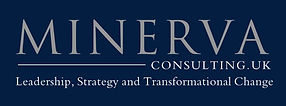
To paraphrase Viscount Slim, you can get in your car and choose where you wish to drive to, that’s freedom! But why do you drive on the left in the UK?
The answer is simply that you 'trust' everyone to do the same because:
Self-interest dictates you drive on the left to avoid a collision; you expect others to do the same
Consideration for others encourages you to drive on the left
It is illegal not to, and the police might feel your collar if you don’t!
That’s discipline —a combination of imposed discipline or well-designed ‘rules’ which exist for good reasons, and self-discipline based on self-interest and consideration of the right and proper thing to do. This results in a form of 'systemic trust and confidence' in others. So your freedom to drive where you want and get there safely, relies on the self-discipline of all drivers.
In the context of organizational effectiveness, there is a paradox to be embraced between discipline and freedom, and it is inextricably linked with ‘clarity’. For scientists to conduct research and to have meaningful discussions with other scientists, they need to talk in terms that other scientists understand, and to be guided by sound scientific principles. They need to employ the discipline of effective methods and common terminology, to have the freedom to create breakthroughs and new knowledge.
The discipline of an actor who rehearses, gives that actor the freedom to move smoothly and with elegance across the stage as his or her lines are delivered. The same applies to musicians in traditional folk music bands (I know, I play in one). Without the 'discipline' of understanding one’s instrument, a particular tune, and the role of others in the band (discipline which creates 'clarity'), it is almost impossible to add the spontaneity and improvisation (freedom) into one's playing at a dance that is needed to make a tune sound both melodic and interesting and with a feel which lifts the dancers and propels them into the next step. That clarity also promotes a form of mutual trust and confidence between the musicians within the band that is independent of personal relationships and individuals' behavioural traits.
So please do not confuse carefully formulated principles, practices and 'disciplines' (intended for intelligent application), with the 'bureaucracy that hinders'. Nor should you confuse 'clarity' with 'order' (which I suggest is unthinking adherence to tick box checklists and following rote formulae).
Alistair Mant[1], when considering an agreed arrangement in organizations about how people will relate to one another (a ‘constitution’), wrote ‘The more formal it is, the clearer it can be and, again somewhat paradoxically, the easier it will be to change. If you are clear about something in the first place, it is possible to know which bits to change. If you are unclear, you don't know where to start, or indeed, what people think the existing arrangements are. To be free, paradoxically, you must be bounded. To attempt to do without boundaries is to become entrapped in a power web of covert and subtle accommodations.’ Change is aided by stability — clarity provides a form of stability and security; without this, people pursue survival.
The effective execution of strategy requires people throughout an organization to have ‘clarity’ about, and ‘emotional engagement’ with, their work; and an agile organization needs ‘decentralized execution’ that remains aligned to ‘centralized intent’. Most leaders know this intuitively. But how do leaders at every level create this in detail, consistently, systemically, and dynamically to ensure that plans and priorities reflect both actual progress and changed context? Enterprises need a leadership ‘system’ for creating clarity, alignment and emotional engagement.
Clarity is translated as alignment to a meaningful understanding of ‘Higher Intent’. Alignment means direction, priorities and actions are those the CEO would wish if he/she were present to advise —alignment of thinking, systems, role relationships, protocols, plans, objectives, and tasks.
Emotional Engagement is a combination of inspiration, a sense of confidence, responsibility and belonging and the commitment to a task which releases discretionary effort and innovative thinking. Engagement is mostly secured through your immediate leader’s behaviour —the power of personal example, and ‘how’ they create clarity. In part engagement is induced through corporate identity and reputation and the wider environment of executive leadership example, and the behavioural consequences of policies, processes, structure, resource allocation, and so on.
[1] Alistair Mant, 1983, Leaders We Deserve, Martin Robertson & Company Ltd

Comentarios